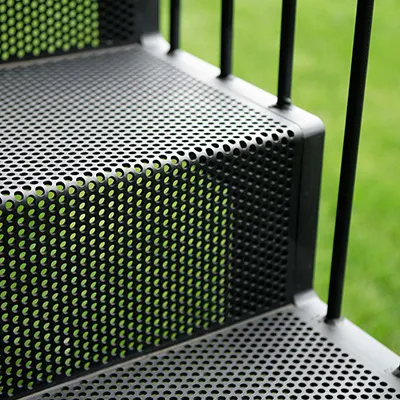-
+86 15030157877
-
sales@galvanizedmetalmesh.com
Sep . 13, 2024 16:17 Back to list
steel metal grating factory
Steel Metal Grating Factory An Overview of Production and Applications
Steel metal grating is an essential component in various industries, including construction, manufacturing, and infrastructure. A steel metal grating factory specializes in the production of this versatile material, which is known for its strength, durability, and functionality. In this article, we will explore the manufacturing processes, applications, and advantages of steel metal grating.
Manufacturing Process
The production of steel metal grating involves several key steps, ensuring that the final product meets the stringent quality standards required for industrial use. The process usually begins with the selection of high-quality steel. Carbon steel and stainless steel are the most commonly used materials, chosen for their strength and resistance to corrosion.
Once the steel is sourced, it undergoes cutting and shaping. Bars of steel are cut into specified lengths and then arranged in a grid pattern. This is typically done using automated machines that ensure precision and efficiency. The cut bars are then welded or mechanically fitted together to create the grating panels. Depending on the intended use, various types of welding techniques such as spot welding or fusion welding may be employed.
Following assembly, the grating panels undergo a series of finishing processes, which may include hot-dip galvanizing, which provides a protective zinc coating to prevent rust and extend the lifespan of the product. Other finishes, such as powder coating, can also be applied for aesthetic purposes or additional protection against the environment.
Applications
Steel metal grating is utilized across a wide range of applications due to its exceptional load-bearing capacity and slip resistance
. Common uses includesteel metal grating factory

1. Walkways and Platforms In industrial settings, steel grating provides safe pathways and platforms for workers to navigate. Its open design allows for easy drainage and air circulation, reducing hazards associated with standing water or debris.
2. Stairways and Ramps Steel grating is often used in stairways and ramps, providing secure footing while also allowing for lightning and visibility.
3. Drainage Covers In urban areas, steel grating serves as effective drainage covers, preventing debris from blocking water flow while allowing rainwater to pass through.
4. Machine Guards In manufacturing environments, steel grating can be used as guards and barriers to protect workers from machinery, preventing accidental injuries.
Advantages
The benefits of using steel metal grating are numerous. Its foremost advantage is strength; it can support heavy loads and withstand harsh environmental conditions, making it ideal for industrial applications. Furthermore, the open structure of steel grating allows for excellent drainage and ventilation, thus contributing to workplace safety.
Maintenance is another positive aspect, as steel grating is easy to clean and requires minimal upkeep. Its long lifespan also provides a cost-effective solution for businesses, reducing the need for frequent replacements.
In conclusion, a steel metal grating factory plays a crucial role in producing materials that enhance safety and efficiency across various industries. With its robust manufacturing processes and many applications, steel metal grating remains a fundamental element in construction and industrial design.
-
Premium Eco-Friendly Roof Tiles | Affordable & Durable
NewsJul.31,2025
-
Premium Roof Tiles for Durable & Stylish Roofing Solutions
NewsJul.30,2025
-
High-Quality Roof Tiles for Durable & Stylish Roofing Solutions
NewsJul.29,2025
-
High Quality Square Wire Mesh Manufacturer & Supplier for Wholesale
NewsJul.29,2025
-
Premium Roof Tiles for Durable & Stylish Roofing Solutions
NewsJul.29,2025
-
Hexagonal Gabion for Slope Protection & Retaining Walls | Durable Wire Mesh
NewsJul.29,2025



